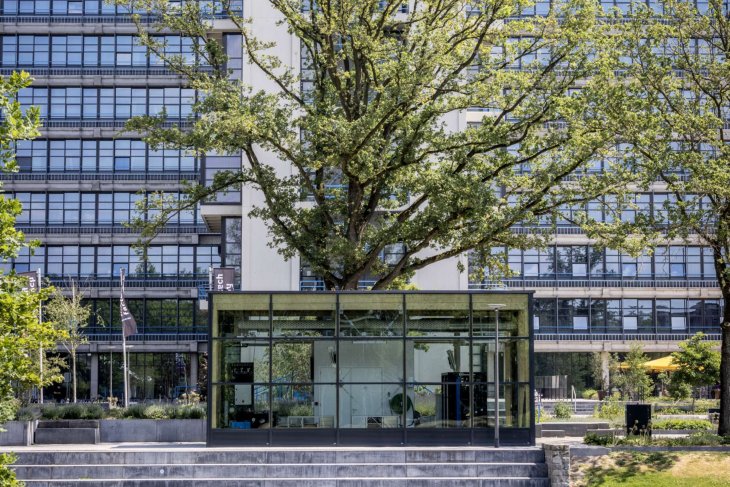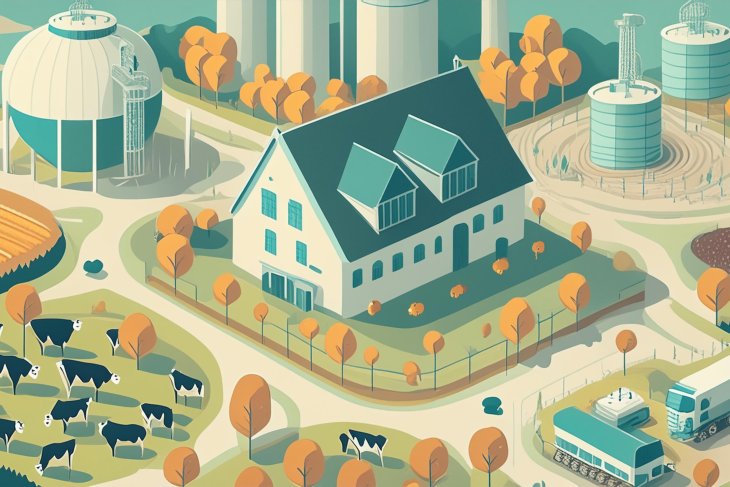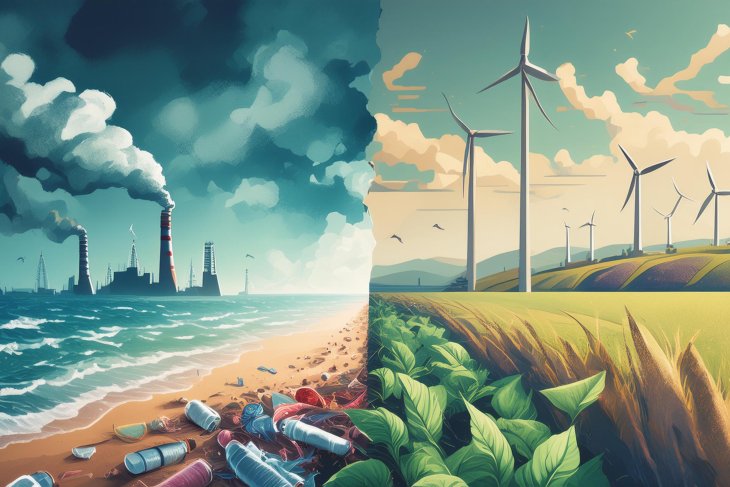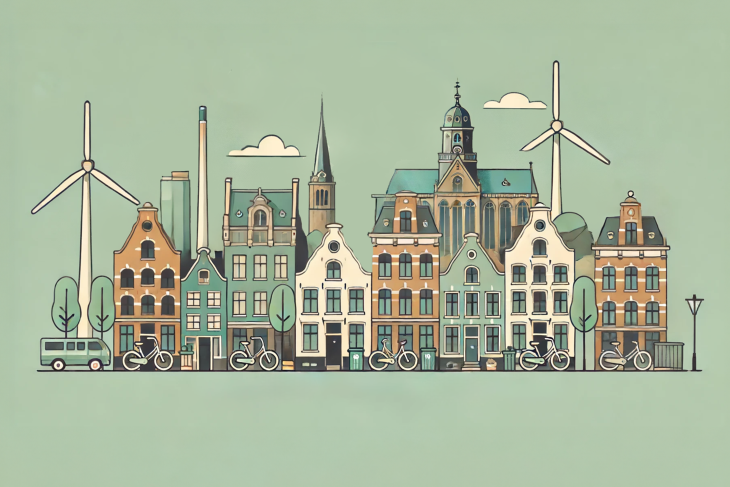An eye-catching structure stands by the pond at Hogekampplein. A small building made entirely of glass - closely resembling a glass display case - shows something special is happening. If you peek inside through the windows, you see all sorts of mysterious devices, tubes, taps and buttons. The fact that thousands of litres of water are flowing through the tangled pipes is not immediately noticeable.
A few signs with explanations and flow charts provide some more information. This is the Waterlab of the Membrane Science & Technology cluster at the Faculty of Science and Technology (S&T). ‘Our regular labs are rather hidden, but this lab is in the perfect place to showcase our research to the outside world,’ explains Heleen Sombekke. As project leader, she talks proudly about the Waterlab. ‘In a normal lab, you take pure water and add salts yourself. But seawater contains more than just some salts. In this lab, we have access to four different types of water: wastewater, rainwater, pond water and drinking water.’ A smile appears on her face. ‘Here, we research real water.’
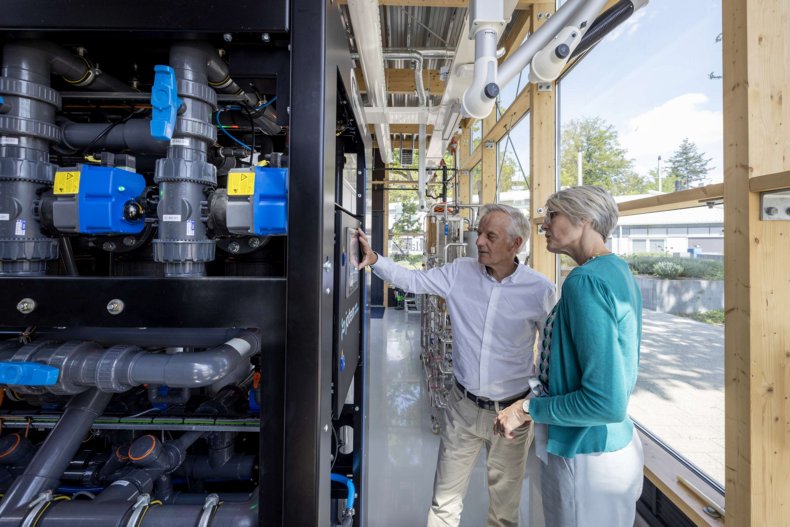
Photo: Rikkert Harink
Drinking water shortage
And there is a clear need for good research on clean drinking water. The pressure on our drinking water supplies is growing. Climate change leads to more and more extreme droughts which are increasingly causing problems. ‘Approximately one billion people are already suffering from drinking water shortages, and this number is likely to increase. It’s a dire situation,’ says Walter van der Meer, UT professor of Membrane Technology. Van der Meer conducts research at UT one day a week and spends the rest of the week working as CEO of drinking water company Oasen NV.
‘Climate change is causing salinisation; fresh groundwater is becoming increasingly salty due to rising seawater. More and more groundwater sources located further inland are under threat,’ Van der Meer continues. He has no qualms about pointing out all the dangers. Population growth, population ageing, medicine residues and industrial waste discharges from higher up the river, all of these problems are brought up.
Physical filters
At the membrane cluster, they have the ‘complete membrane package’ as Sombekke likes to call it. This consists of the membranes themselves: a bundle of straws at the nanoscale where only water can pass through. Salts, contaminants, and all other substances are too big. By cleverly selecting the right materials or placing the membranes on top of each other in a certain manner, you can essentially filter any substance you want. If you charge the material, it makes it either harder or easier for certain charged particles to pass through.
The main advantage of this is that it’s a purely physical process. ‘If you want to clean water biologically with bacteria, for example, you have to keep all kinds of properties of the water - like temperature and acidity - as constant as possible. And if you want to purify it chemically, that often results in unwanted and sometimes even harmful by-products,’ Van der Meer explains. When it comes to membrane filtration, you just need quite a bit of pressure to force the water through the membrane.
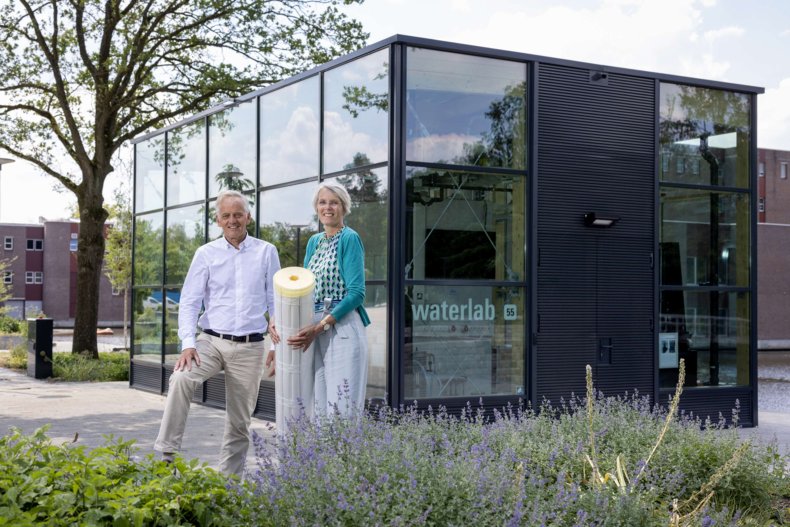
Photo: Rikkert Harink
Waterlab
The Waterlab is where it all comes together. The lab has a total of five pilot spots to test out new membranes and processes on a smaller scale. ‘In a normal lab we filter about one litre per hour, but in the Waterlab, a pilot installation can filter about a thousand litres per hour,’ explains Sombekke, ‘and that’s nothing compared to a largescale pilot in actual practice where an installation sometimes filters a thousand cubic metres per hour, but for that to happen, you have to be quite certain that your idea works.’
‘The ultimate goal is to develop a fully circular water economy. Water is so cheap in the Netherlands that we use drinking water when it’s not really necessary. If we take a critical look at what kind of wastewater we can still reuse, we don’t always have to use groundwater as a supply source. Sometimes a company has a huge amount of used water on hand, which would be perfectly suitable for the company next door to use as process water, for example. But since we don’t know this about each other, we don’t make that connection,’ says Sombekke.
Both Sombekke and Van der Meer hope that the Waterlab will inspire as many people as possible. Sombekke: ‘Too much research still happens behind closed doors. It’s such a shame! We have a beautiful campus which is an excellent place to showcase innovations.’ ‘If you walk around on campus, you should be able to see all the things people are working on here,’ Van der Meer adds. ‘Every visitor can be the next link to industry and new applications. I wish every department could have its own Waterlab.’
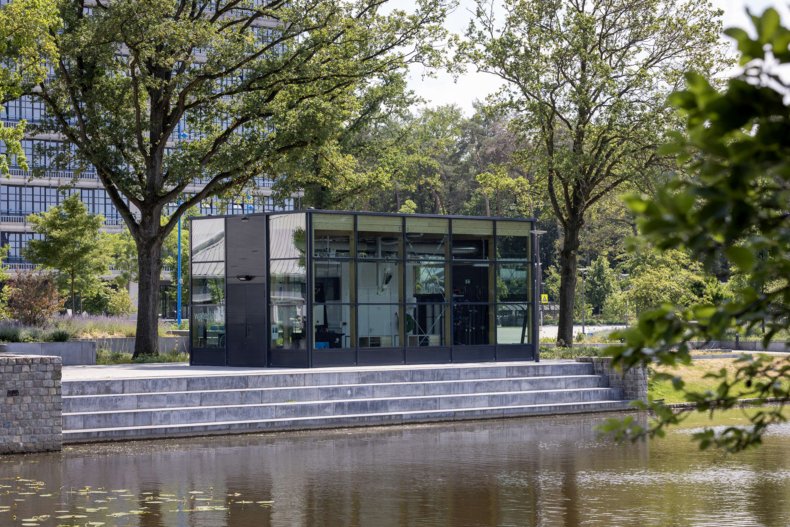
Photo: Rikkert Harink
This story is an adapted version of an article previously published in Campus Magazine, issue 2023-2

